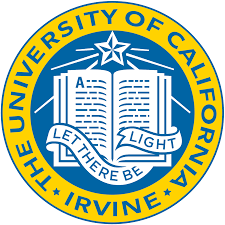
UCI PEC
| Project ID | e9c4ffef-80c8-4918-92a9-91ee12e84e54 |
|---|
Development of Composite Photocatalyst Materials that are Highly Selective for Solar Hydrogen Production and their Evaluation in Z-Scheme Reactor Designs
Recipient University of California, Irvine (PI: Shane Ardo)
Subs Columbia University (PI: Dan Esposito) and University of Michigan (PI: Rohini Bala Chandran)
Water Splitting Technology PEC
Abstract According to techno-economic analyses commissioned by DOE in 2009 and subsequent analyses by members of our research team, particle suspension reactors for clean solar hydrogen production could constitute an economically competitive technology if they operated at a ~10% solar-to-hydrogen conversion efficiency. Prior work from members of our research team showed that this efficiency is possible for inexpensive stacked dual-bed particle suspension reactors, but required innovations in photocatalyst materials properties. State-of-the-art photocatalyst materials only exhibit a ~1% solar-to-hydrogen conversion efficiency, thus necessitating research and development into more effective composite photocatalyst particles. A key challenge to increase their efficiency is to slow deleterious back-reactions while enabling effective hydrogen and oxygen evolution reactions.
Therefore, our proposed project aims to develop new photocatalyst particles and ultrathin oxide coatings to enable selective reactivity and demonstration of the interim DOE target of 3% solar-to-hydrogen conversion efficiency in an intrinsically-safe particle suspension reactor design. Our project includes a strong emphasis on materials synthesis via benchtop and high-throughput methods, development of selective coatings, materials screening protocols to allow for correlation of structure–function relationships on individual particles and composition–function relationships for combinatorial arrays of materials, and numerical modeling and simulations that bridge particle-scale behavior with expected reactor-scale solar-to-hydrogen conversion efficiencies.
Materials synthesis includes benchtop sol gel, hydrothermal, and solid-state techniques of mixed metal-oxide/nitride and metal-oxide/sulfide particles for enhanced visible-light absorption, as well as inkjet-printed combinatorial libraries of particles based on doped SrTiO3 and BaTiO3. Material properties will be evaluated using inline mass spectrometric detection of evolved hydrogen and oxygen for determination of quantum yields, transmission-mode and diffuse reflectance absorbance spectroscopy to measure photophysical properties, transmission electron microscopy and ellipsometry to measure materials properties, electroanalytical techniques to measure coating transport properties, and approximate numerical values from simulations. A unique aspect of our work will be the development of ultrathin oxide coatings on the composite photocatalyst particles that will be designed to impart selective redox reactivity.
Successful accomplishment of project goals will enable development and demonstration of an engineered stacked dual-bed photocatalyst reactor that operates at efficiencies that are an order-of-magnitude larger than the state-of-the-art. The proposed research will be conducted by Prof. Shane Ardo (UC Irvine), Prof. Dan Esposito (Columbia University), and Rohini Bala Chandran (University of Michigan) who have broad and synergistic research experience and expertise, and a track record of successful collaborations. Our team will also leverage several resource capability nodes including big data categorization and analysis of experimental datasets (NREL), techno-economic analyses and life-cycle assessment of H2 production plants (NREL & LBNL), atomic-layer deposition coating of particles (NREL), in situ and operando nanoscale characterization capabilities (LBNL), and advanced microscopies (SNL).
